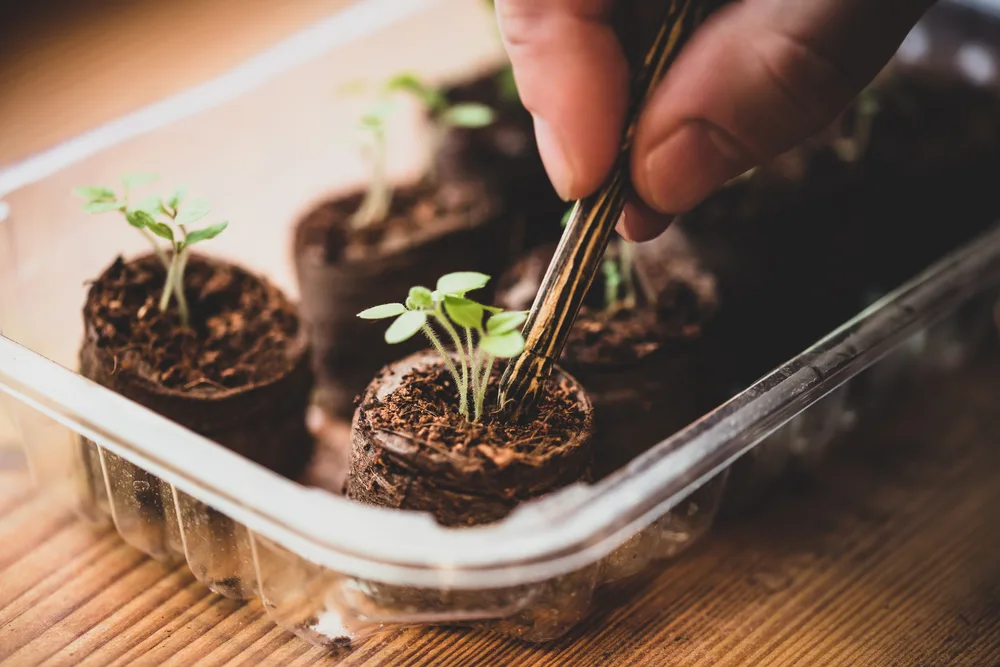Save Money by Propagating your own Garden Plants at Home
- A starter course for students with no previous experience of propagation.
- Covers all aspects of propagating plants.
- Develop a sound knowledge in starting and running your own propagation nursery.
- Learn about seed, cuttings, grafting, division, layering, materials and equipment.
Course Aims:
- Obtain leaflets or catalogues plus prices for a range of plant containers.
- Obtain samples of at least 6 different potting soil components and make up a mix which could be used for general potting of outdoor shrubs and trees into 6 inch pots.
- Collect samples of at least six types of plant labels.
- Collect at least three different types of seed to plant and germinate.
- Obtain catalogues or price lists from at least six companies or organisations which supply seed.
- Put in cuttings of at least three different types of plants.
- Use diagrams to explain how you would grow four different cuttings.
- Contact a bulb or herb farm to research the type of propagation program they have.
- Carry out aerial layering.
- Practice budding and grafting.
- Prepare a work schedule for a propagation set up.
- Design the layout for a new nursery or propagation area which would be ideal for your purposes.
What you will learn in this propagation course:
There are 9 lessons in this course:
- Methods of Propagation
- Propagation methods – sexual and asexual
- Plant classification
- Decisions before starting
- Propagating in pots or the ground
- Growth stages
- Propagating Structures and Techniques
- Growing in a greenhouse
- What can you grow?
- Types of greenhouses
- Heated or unheated
- Siting a greenhouse -orientation, benches
- Cold frames
- Heated propagators
- Shade houses – gable, flat roofed, flat arched, tunnel
- Propagating Materials
- Common propagation media mixes
- Components – vermiculite, perlite, sand
- Rockwool
- Peat
- Potting media
- Potting soil mixes
- Pine bark
- Factors affecting fertiliser application – cation exchange capacity, pH
- Propagation containers
- Containers for potting up plants
- Propagation tools – secateurs, knives
- Seed Propagation
- Introduction to seed propagation
- Collecting and handling seed
- Cross pollination
- Disease
- Desiccation
- Time to collect seed
- Germination fundamentals
- Germination treatments – soaking, chilling, burning
- Stimulating germination
- Hygiene
- Where to sow seed – containers, open bed, protected bed
- Storing seeds
- Seed storage viability factors
- Types of seed storage -open, dry, cold, cold moist
- Handling seedlings – watering, disease control, thinning, environmental control, transplanting
- Pricking out or tubing seedlings
- Propagating ferns from spore
- Propagating by Cuttings
- Introduction
- Why cuttings
- How to propagate a cutting
- Types of cuttings – the area of plant tissue used, the tenderness or age of tissue
- Softwood cuttings
- Semi hardwood cuttings
- Hardwood cuttings
- Treatment of the cutting
- Herbaceous cuttings
- Tip cuttings
- Heel cuttings
- Nodal cuttings
- Basal cuttings
- Cane cuttings
- Root cuttings
- Leaf cuttings
- Other cuttings
- Stock plants
- Hormone treatment alternatives – auxins, cytokinins, gibberellins
- Improving strike rate
- How to maintain plants in pots -Potting, Feeding, Watering
- Ventilation, light temperature
- Growing on areas
- Hardening off rooted cuttings
- Labels
- Miscellaneous Propagating Techniques
- Layering
- Types of layering – tip, mound, simple, compound, aerial
- Natural layering – suckers, runners, offsets, crowns
- Using parts of specialised stems and roots to propagate
- Propagating bulbs from offsets
- Bulblet formation on scales
- Stem cuttings
- Bulbils
- Basal cuttage and scooping
- Corm division
- Tuber division
- Culm cuttings
- Pseudobulbs
- Division of orchids
- Dividing and separating perennials
- Tissue culture
- Budding and Grafting
- Reasons for budding and grafting
- How a graft forms
- Factors influencing graft healing – compatibility, temperature, moisture, polarity, etc
- Carpentry of grafting
- What can be grafted onto what
- Types of grafts
- Budding
- Whip and Tongue graft
- Top graft and side graft
- Approach graft
- Other graft types – nurse seed, irrigated, root
- Lilac grafting
- Soft tissue grafting
- Grafting tapes
- Propagation of Specific Plants
- Choosing species to propagate
- Nursery Management
- Specialist nurseries
- Typical propagation methods for selected plants
- Layout and Organisation of a Propagating Area
- Plants and water
- Understanding water excess and deficiency
- Greenhouse irrigation methods
- Runoff and leachate
- Irrigation practices
- Irrigation systems for propagation
- Pulse watering
- Water cans
- Pest and Disease management – cleanliness, U.C. system, IPM
- Diseases
- Pests
- Nursery nutrition
- Plant modification methods
Each lesson culminates in an assignment which is submitted to the school, marked by the school’s tutors and returned to you with any relevant suggestions, comments, and if necessary, extra reading.

